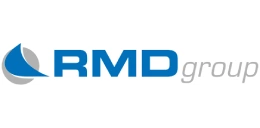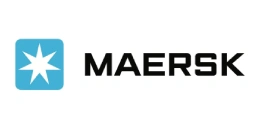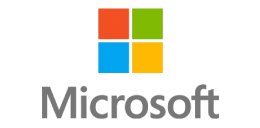Automotive Fabric Cost Model: From Fiber to Finance
_11zon.webp)
What is Automotive Fabric?
Automotive fabrics are specialized textile materials engineered for use in vehicle interiors, combining aesthetics, functionality, and durability. Unlike ordinary textiles, automotive fabrics must withstand prolonged wear, UV exposure, temperature variations, and continuous contact, while also contributing to passenger comfort and vehicle safety.
Key Applications Across Industries:
They are used in seats, headliners, door panels, carpets, seat belts, airbags, and trunk liners. They are generally made of polyester, nylon, vinyl, leather, or advanced composites, with added surface treatments of flame retardancy, water resistance, antibacterial finishes, and UV protection. Advances in manufacturing process, e.g., woven, nonwoven, and knitted processes enable suppliers to match varied OEM design requirements while striking the right balance between cost-effectiveness and sustainability. More and more, automakers and Tier-1 suppliers are jointly developing fabrics that are both technically compliant and responsive to consumer desires for luxury, comfort, and environmental responsibility. Automotive fabrics are thus not only a functional element but also a major differentiator in overall vehicle attractiveness.
What the Expert Says: Market Overview & Growth Drivers
The global automotive fabric market reached USD 39.7 Billion in 2024. According to IMARC Group, the market is projected to reach USD 53.6 Billion by 2033, at a projected CAGR of 3.22% during 2025-2033. The automotive fabrics market is propelled by a combination of consumer demand, regulatory needs, and industry innovation.
Increased demand for high-end and bespoke interiors is compelling OEMs to embrace innovative fabrics that deliver enhanced comfort, luxury, and brand presence. Increased regulatory focus on vehicle safety and fire protection drives the use of flame-retardant, high-strength fabrics, particularly in seat belts and airbags. Sustainability of the environment is also a compelling driver, with car manufacturers increasingly using recyclable, bio-based, and low-VOC fabrics to address corporate sustainability initiatives and strict emissions standards. The transition to electric and driverless cars is also generating demand for lighter, sound-absorbing, and thermally efficient materials that enhance battery performance and cabin comfort. Moreover, growing vehicle manufacturing in developing regions like Asia-Pacific and the Middle East is fueling volume demand. Strategic partnerships between OEMs, Tier-1 suppliers, and textile firms are facilitating innovations like smart fabrics, antimicrobial finishes, and eco-friendly dyeing processes, making sure that fabrics continue to be an important differentiator in the competitive automotive market.
Case Study on Cost Model of Automotive Fabric Manufacturing Plant:
Objective
One of our clients reached out to us to conduct a feasibility study for setting up a large-scale automotive fabric manufacturing plant.
IMARC Approach: Comprehensive Financial Feasibility
We developed a comprehensive financial model for the setup and operation of a proposed automotive fabric manufacturing plant in Saudi Arabia. This plant is designed to produce 1,920 tons of automotive fabric annually.
Manufacturing Process: The production process of automotive fabrics is a well-engineered series that combines raw material preparation, fiber creation, and sophisticated finishing in order to ensure that the strict automotive industry requirements are met. It starts with the manufacture of polyester chip or fiber from petrochemical feedstocks like ethylene glycol and purified terephthalic acid (PTA). Here additives such as flame retardants, UV stabilizers, antimicrobial products, and specialty coatings are mixed to improve performance. The second stage, fiber production, entails melting polyester chips and forcing them through spinnerets to form continuous filaments, which are then drawn for strength and crimped to enhance bulk and cohesion. The fibers are then treated through web production methods like spunbond, needle punch, knitting, or weaving, depending on the requirements of the application. The web is bonded through bonding techniques and usually laminated with polyurethane or polyethylene foam for increased comfort and durability in such applications as seat covers, headliners, and door panels. Additional dyeing and finishing adds custom color, patterns, and functional finishes such as flame retardancy, stain resistance, and acoustics. Protective coatings are also added for appearance and wear resistance. Final processing, involving cutting, quality control testing, and moisture-resistant packaging, completes the process to have fabrics conform to OEM specifications upon delivery.
_11zon.webp)
Mass Balance and Raw Material Required: The primary raw materials used in the automotive fabric producing plant are raw petroleum coke and coal tar pitch. For a plant producing 1 ton of automotive fabric, 1.04 ton of polyester chips, and 0.29 ton of calcium carbonate is required.
Techno-Commercial Parameter:
- Capital Investment (CapEx): Capital expenditure (CapEx) in a manufacturing plant includes various investments essential for its setup and long-term operations. It covers machinery and equipment costs, including procurement, installation, and commissioning. Civil works expenses involve land development, factory construction, and infrastructure setup. Utilities such as power, water supply, and HVAC systems are also significant. Additionally, material handling systems, automation, environmental compliance, and safety measures are key components. Other expenditures include IT infrastructure, security systems, and office essentials, ensuring operational efficiency and business growth.
- Operating Expenditure (OpEx): Operating expenditure is the cost incurred to operate a manufacturing plant effectively. Opex in a manufacturing plant typically includes the cost of raw materials, utilities, depreciation, taxes, packing cost, transportation cost, and repairs and maintenance. The operating expenses are part of the cost structure of a manufacturing plant and have a significant effect on profitability and efficiency. Effective control of these costs is necessary for maintaining competitiveness and growth.
_11zon.webp)
- Profitability Analysis Year on Year Basis: The proposed automotive fabric plant, with a capacity of 1,920 tons of automotive fabric annually, achieved an impressive revenue of US$ 3.6 million in its first year. We assisted our client in developing a detailed cost model, which projects steady growth, with revenue rising throughout the projected period. Moreover, gross profit margins improve from 23.3% to 26.6% by year 7, and net profit rises from 14.2% to 19.7%, highlighting strong financial viability and profitability.
.webp)
Conclusion & IMARC's Impact:
Our financial model for the automotive fabric manufacturing plant was meticulously developed to meet the client’s objectives, providing an in-depth analysis of production costs, including raw materials, manufacturing, capital expenditure, and operational expenses. By addressing the specific requirements of producing 1,920 tons of automotive fabric annually, we successfully identified key cost drivers and projected profitability, considering market trends, inflation, and potential fluctuations in raw material prices. This comprehensive financial model equipped the client with valuable insights into strategic decision-making, demonstrating our commitment to delivering high-quality, client-focused solutions that ensure the long-term success of large-scale manufacturing ventures.
Latest News and Developments:
- In February 2025, the acquisition of a majority stake of 70 percent in the Chinese automotive supplier Jiangsu Huanyu Group by Autoneum, which was announced in November 2024, was completed, following approval by the authorities.
- In December 2024, the parent company of Mehler Technologies, Freudenberg Performance Materials Holding GmbH, received approval from the antitrust authorities in Germany, Austria, and Poland to acquire Heytex's main business. Therefore, the newly established coated technical textiles specialist will include Heytex's main business, which has three production sites (in China and Germany), as well as all head office-related tasks.
- In August 2024, Autoneum inaugurated its new production plant in Pune, Western India. The company's strategy focuses on future profitable expansion, with a particular emphasis on Asian growth areas, aligns with the inauguration of the third factory in India, a major automotive market.
Why Choose IMARC:
IMARC's Financial Model Expertise: Helping Our Clients Explore Industry Economics
IMARC is a global market research company that offers a wide range of services, including market entry and expansion, market entry and opportunity assessment, competitive intelligence and benchmarking, procurement research, pricing and cost research, regulatory approvals and licensing, factory setup, factory auditing, company incorporation, incubation services, recruitment services, marketing and sales.
Under our factory setup services, we assist our clients in exploring the feasibility of their plants by providing comprehensive financial modeling. Additionally, we offer end-to-end consultation for setting up a plant in India or abroad. Our financial modeling includes an analysis of capital expenditure (CapEx) required to establish the manufacturing facility, covering costs such as land acquisition, building infrastructure, purchasing high-tech production equipment, and installation. Furthermore, the layout and design of the factory significantly influence operational efficiency, energy consumption, and labor productivity, all of which impact long-term operational expenditure (OpEx). So, every parameter is covered in the analysis.
At IMARC, we leverage our comprehensive market research expertise to support companies in every aspect of their business journey, from market entry and expansion to operational efficiency and innovation. By integrating our factory setup services with our deep knowledge of industry dynamics, we empower our clients to not only establish manufacturing facilities but also strategically position themselves in highly competitive markets. Our financial modeling and end-to-end consultation services ensure that clients can explore the feasibility of their plant setups while also gaining insights into competitors' strategies, technological advancements, and regulatory landscapes. This holistic approach enables our clients to make informed decisions, optimize their operations, and align with sustainable practices, ultimately driving long-term success and growth.
Our Clients
Contact Us
Have a question or need assistance?
Please complete the form with your inquiry or reach out to us at
Phone Number
+91-120-433-0800+1-201-971-6302
+44-753-714-6104










